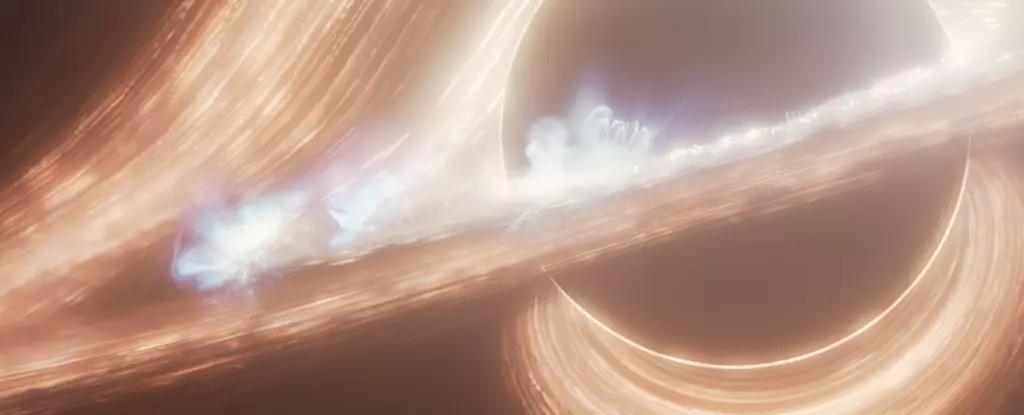The enigmatic Sagittarius A*, the supermassive black hole residing at the heart of the Milky Way, has long intrigued astronomers. While it may not exhibit the same insatiable appetite for gas as its more ravenous counterparts found in distant galaxies, recent observations from NASA’s James Webb Space Telescope (JWST) have illuminated a fascinating aspect of its behavior. The findings reveal that Sagittarius A* is far from dormant; instead, it engages in a stunning display of cosmic fireworks, characterized by flares of varying luminosity and duration that underscore the dynamic environments surrounding black holes.
The groundbreaking observations were published in The Astrophysical Journal Letters, where researchers led by Farhad Yusef-Zadeh from Northwestern University shared their astonishing discoveries. Over the span of 48 hours, segmented into multiple eight- to ten-hour observation windows, the team targeted Sagittarius A* utilizing the Near-Infrared Camera (NIRCam) aboard JWST. While the researchers anticipated detecting flares, they were taken aback by the sheer frequency and intensity of the activity noted in the black hole’s acclamation disk—a swirling mass of hot gas that envelopes it.
According to Yusef-Zadeh, the observations painted an unpredictable picture: “We observed a constant ebb and flow of brightness, punctuated by significant bursts of light. The random nature of this activity was exhilarating.” This sense of unpredictability is crucial, as it suggests that the processes powering these flares are complex and not entirely understood.
Remarkably, the flares seem to stem from two distinct phenomena occurring within the accretion disk. The smaller flares are hypothesized to result from turbulent activity within the disk, leading to compression of the magnetized gas. This turbulence can trigger brief bursts of radiation reminiscent of solar flares observed in our Sun. Yusef-Zadeh elaborates on this analogy: “The dynamics of the Sun’s magnetic field erupting during solar flares provide a fitting parallel, yet the extreme conditions surrounding a black hole lead to even more dramatic events.”
Conversely, the more significant flares may be rooted in magnetic reconnection events. During these occurrences, colliding magnetic fields generate powerful bursts of energy, resulting in streams of particles propelled at velocities nearing the speed of light. This phenomenon, akin to a static electricity spark, reveals the intricate interplay of electromagnetic forces at play in the realm of black holes.
Another salient finding pertained to the timing of brightness changes observed at different wavelengths. The data revealed a remarkable delay; events captured at shorter wavelengths displayed fluctuations in brightness marginally before their longer-wavelength counterparts. “This time delay is a novel observation for us,” said Yusef-Zadeh. “The shorter-wavelength emissions seem to fade or surge ahead of the longer ones by a brief period.” Such revelations are invaluable, as they could offer insights into the underlying physics governing the interactions in the swirling accretion disk.
This unexpected observation indicates that the particles associated with the shorter-wavelength flares may lose energy more rapidly than those at longer wavelengths, a behavior consistent with the dynamics of cosmic synchrotron radiation. Understanding these nuances could provide a clearer picture of the processes shaping the environment around Sagittarius A*.
As researchers continue to dissect these cosmic phenomena, they express optimism about their future investigations. Longer observation sessions with JWST are on the horizon, aimed at refining these observations and filtering out noise that may obscure significant features. Yusef-Zadeh emphasizes the need for sustained observation: “By extending our observation time, we hope to enhance detection of weak flaring events, providing us with a richer dataset that could unlock further mysteries of the black hole’s behavior.”
The flares emanating from Sagittarius A* reveal not only its vibrancy as a cosmic entity but also offer a fascinating glimpse into the complex dynamics that characterize supermassive black holes. With continuing advancements in observational technology, we might soon uncover even deeper secrets that await us in the heart of our own galaxy. Singular phenomena like Sagittarius A* remind us of the vast cosmos and the untapped knowledge still lurking within it.


Leave a Reply